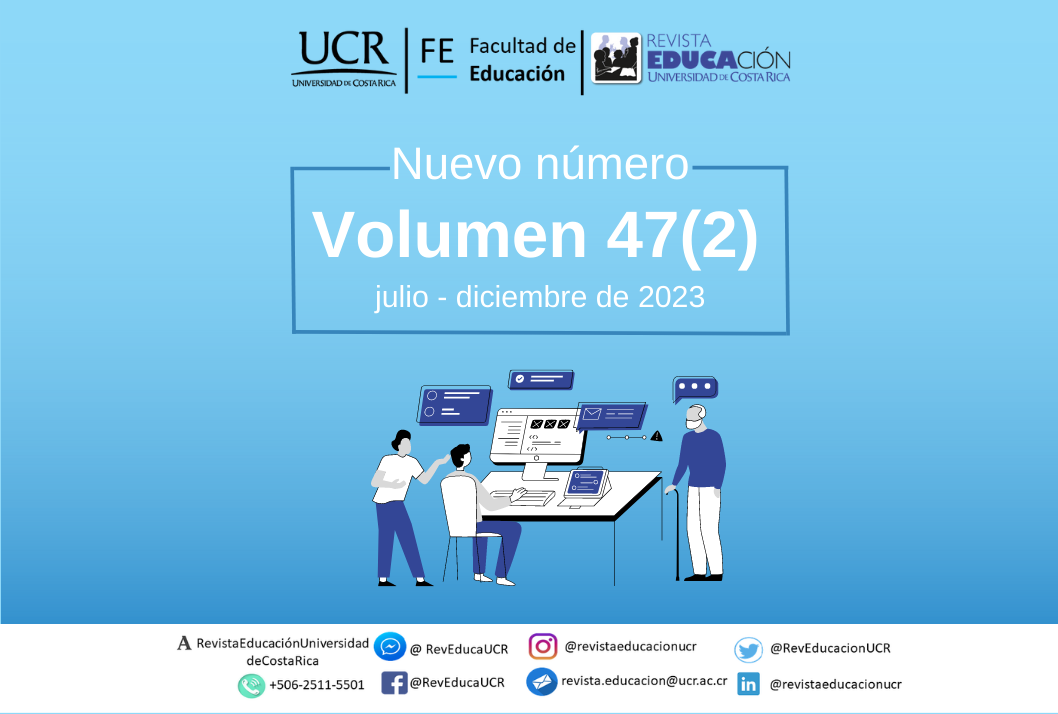Abstract
Currently, there is a growing uprooting by culture, dance, music, ancestral knowledge, and the idiosyncrasy that characterizes the Colombian regions, particularly, the Andean region. This leads to some traditions and customs not being transmitted and therefore preserved. Therefore, the researchers consider it necessary to implement actions in the classroom that allow, through dance, music, and literature, to promote the cultural recognition of this region. As the main objective of this research, the investigators aim to generate an intercultural dialogue that permits the development of cultural identification and recognition through dance, music, and literature of the Andean region in the departments of Cundinamarca and Nariño, in the educational institutions Juan Luis Londoño de la Cuesta and the Encano Municipal Educational Institution. For data collection, the researchers employed three techniques: survey, direct observation, and interview. A survey with a questionnaire of nineteen closed questions was applied to identify the knowledge that the students had about the culture of the department in which they do not live. In addition, direct observation and interviews were carried out to complement the information obtained through the survey. Therefore, the authors created spaces with different students from two institutions, where an intercultural dialogue took place, and through which the identification and recognition of the culture of the Andean region was promoted. The study of this research yielded significant results; for instance, the students reached a deeper understanding of the disciplines, as well as being more participatory and less shy. As a recommendation, the investigators suggest to continue with the integrated teaching of these disciplines, promoting collaboration between educational institutions and taking advantage of technology as a means to enrich the experience.
References
Aguilar, C., Olea, M., Padrós, M. y Pulido, M. (2010). Lectura dialógica y transformación de las comunidades de aprendizaje. Revista interuniversitaria de formación del profesorado, 24(1), 31-44. https://www.redalyc.org/pdf/274/27419180003.pdf
Alonso, E. (2013). La educación en valores a través de la música. Marco teórico y estrategias de intervención. Universidad de Vigo - España. Aurea.
Bernal, C. (2006). Metodología de la investigación para administración, economía, humanidades y ciencias sociales. Pearson Educación https://books.google.com.co/books?id=h4X_eFai59oC&printsec=frontcover&hl=es#v=onepage&q&f=false
Bernal, C. (2010). Metodología de la investigación; para administración y economía. Educación Pearson. https://abacoenred.com/wp-content/uploads/2019/02/El-proyecto-de-investigaci%C3%B3n-F.G.-Arias-2012-pdf.pdf
Cabal, C., Urbano, L. y Vega, L. (2023). Danza, música y literatura como estrategia didáctica para un diálogo intercultural en la región Andina [Tesis de graduación]. Universidad Iberoamericana de Colombia.
Constitución Política de Colombia. (1991). Congreso de la República de Colombia. https://dapre.presidencia.gov.co/normativa/normativa/Constitucion-Politica-Colombia-1991.pdf
Díaz, M. Díaz, W. y Morales, R. (2014). La música como recurso pedagógico en la edad preescolar. Revista Imágenes de investigación, 13, 102-108.
Erikson, E. (1950). Childhood and society. W. W. Norton & Company
García, H. (2002). La danza en la escuela y la formación para los profesores. Revista contexto educativo, 5, 173-184.
Jover, G., Rodríguez, M. y Pérez, M. (2005). Educación literaria y diálogo intercultural. Aula de innovación educativa, (142), 62-67. https://dialnet.unirioja.es/servlet/articulo?codigo=1180026
Leff, E. (2003). Racionalidad ambiental y diálogo de saberes: sentidos y senderos de un futuro sustentable. Polis, Revista de la Universidad Bolivariana, 2(7), 13-40. https://www.redalyc.org/pdf/305/30500705.pdf
Malgesini, G. y Giménez, C. (2000). “Cultura” en Guía de conceptos sobre migraciones, racismo e interculturalidad. Catarata. http://redongdmad.org/manuales/educacionintercultural/datos/docs/ArticulyDocumentos/Clarificacion%20de%20conceptos/culMultIntr/CULTURA.pdf
Ministerio de Educación Nacional. (1994). Ley general de educación. https://www.mineducacion.gov.co/1621/articles-85906_archivo_pdf.pdf
Morocho, J. (2022). La danza como recurso para la educación intercultural. [Tesis de graduación. Universidad Nacional de Educación de Ecuador]. http://repositorio.unae.edu.ec/handle/56000/2322
Mullo, E. y Padilla, M. (2019). La diversidad cultural y su impacto en el turismo comunitario de la región Andina, Ecuador naturaleza. Revista Opera, 6(6), 169-187. https://www.redalyc.org/journal/6538/653868370008/653868370008.pdf
Otzen, T. y Manterola, C. (2017). Técnicas de Muestreo sobre una Población a Estudio. Universidad de Chile, 35(1), 227-232. https://scielo.conicyt.cl/pdf/ijmorphol/v35n1/art37.pdf
Paone, R. (1999). La Música Carranguera. Monografía para finalizar los estudios de música. [Tesis licenciatura inédita, Escuela popular de arte de Medellín] https://renatopaonemusic.com/wp-content/uploads/2018/05/LA-MUSICA-CARRANGUERA-TESIS-RENATO-PAONE.pdf
Salabarría, D., Medina, A. y Pérez, R. (2019). Fortalecimiento de la identidad cultural a través del rescate de tradiciones en la niñez. Revista de estudios humanísticos y sociales, 61(192), 177-190. https://islas.uclv.edu.cu/index.php/islas/article/view/1082
Unesco. (2006). Guidelines on Intercultural Education. Section of Education for Peace and Human Rights, Division for the Promotion of Quality Education, Education Sector. https://unesdoc.unesco.org/ark:/48223/pf0000147878
Villar, F., López, O. y Celdrán, M. (2013). La generatividad en la vejez y su relación con el bienestar: ¿Quién más contribuye es quien más se beneficia?. Revista Anales de psicología, 29(3), 897-906. https://scielo.isciii.es/pdf/ap/v29n3/psicologia_evolutiva6.pdf
Zapata, G y Niño, S (2018). Diversidad cultural como reto a la educación musical en Colombia: problemas relacionales entre culturas musicales, formación e investigación de la música. Cuadernos de Música, Artes Visuales y Artes Escénicas, 13(2). https://revistas.javeriana.edu.co/files-articulos/MAVAE/13-2%20(2018-II)/297055959012/
Comments

This work is licensed under a Creative Commons Attribution-NonCommercial-NoDerivatives 3.0 Unported License.
Copyright (c) 2023 Revista Educación - Journal of Education



